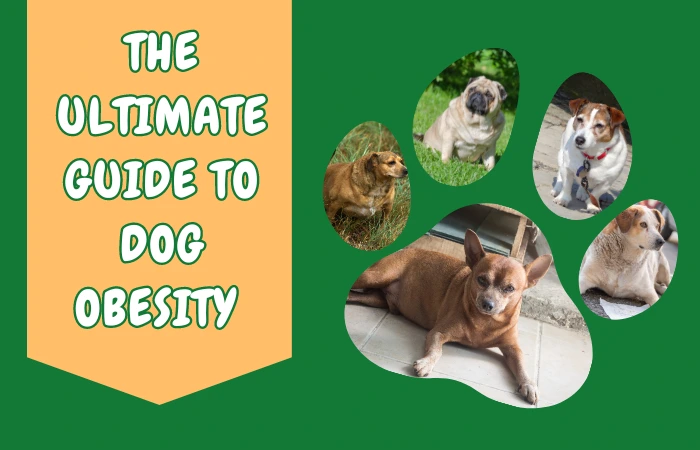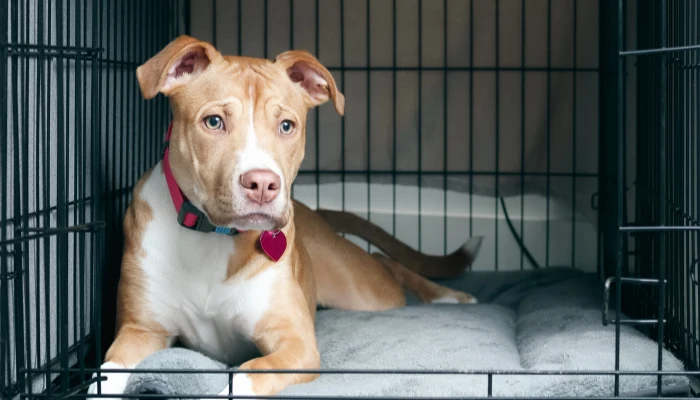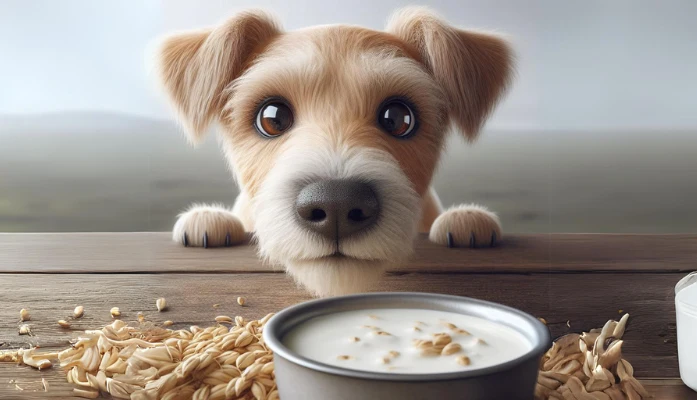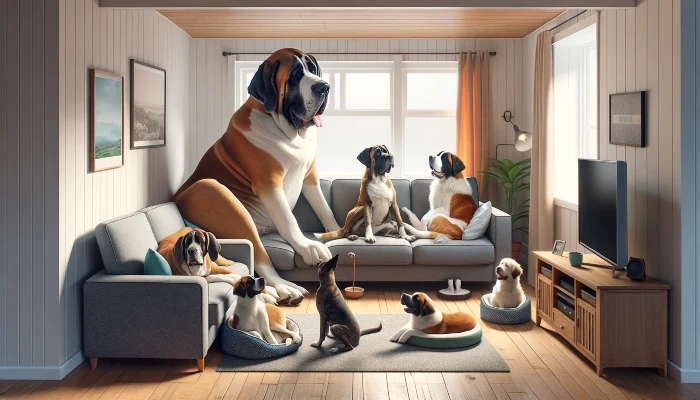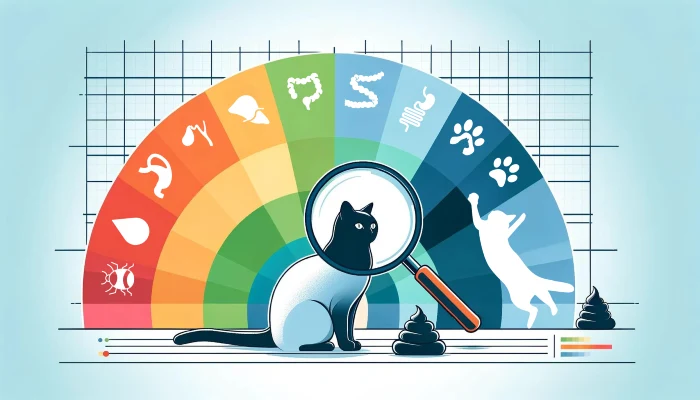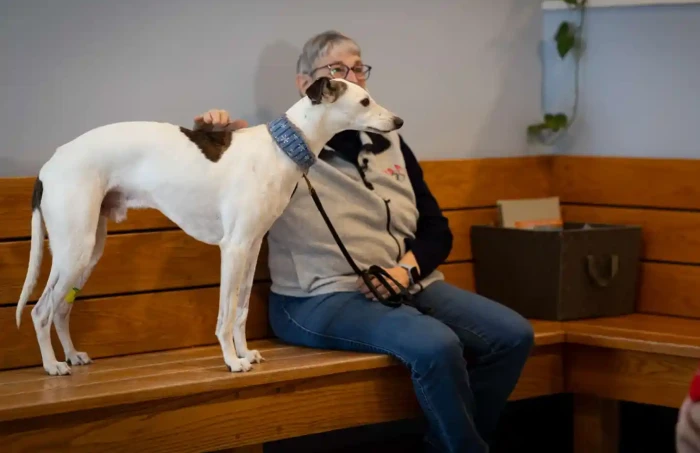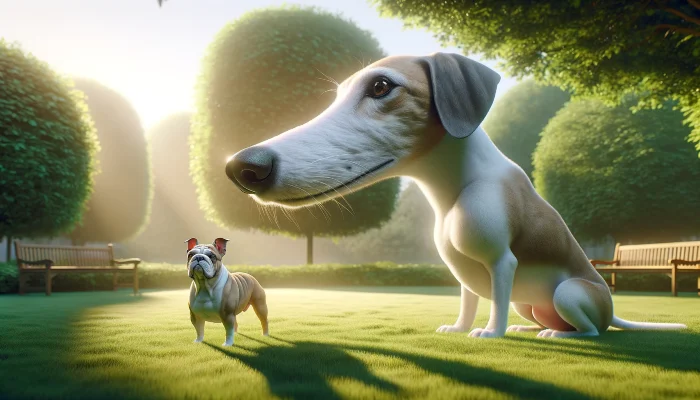It’s a startling truth: Recent studies show that over 50% of dogs in the United States are classified as overweight or obese. That’s over half of our best friends at risk for a myriad of health complications.
And it’s our fault as pet owners!
Obesity isn’t just a human epidemic; it has firmly gripped our pets, dramatically reducing their quality of life and potentially shaving years off their lifespan. As loving pet parents, it’s our responsibility to ensure our companions lead happy, healthy lives.
So, how can we combat this alarming trend?
This comprehensive guide dives deep into the world of canine obesity, its underlying causes, the hidden dangers it poses, and offers actionable steps and strategies to ensure your dog stays fit, active, and healthy. Because our dogs give us their best, they deserve nothing less in return.
The Hidden Dangers of Overweight Dogs: Health Risks Every Pet Owner Should Know
Obesity isn’t just an aesthetic issue. It’s a health risk that can severely compromise the quality and longevity of your dog’s life. Here, we’ll delve into the risks associated with canine obesity, hoping to underscore the importance of maintaining a healthy weight for your furry friend.
Diabetes
Yes, dogs can get diabetes too, and obesity is a significant risk factor.
Just like in humans, an overweight dog may develop insulin resistance. This means their body can’t effectively use insulin, a hormone vital for regulating blood sugar levels.
Think of insulin as a key that opens cells to allow sugar inside. In diabetic dogs, this ‘key’ isn’t working properly, leading to elevated blood sugar levels and health complications. Here are some signs of diabetes that dogs exhibit. Weight loss, increased appetite, increased thirst, increased urination, and sweet smelling breath. Contact your vet immediately if your dog experiences any of these symptoms.
Heart Disease & Breathing Difficulties
A dog’s cardiovascular system can be overworked due to obesity, leading to heart diseases and breathing difficulties.
Extra weight means the heart must work harder to pump blood throughout the body. Additionally, fat buildup in and around organs can lead to reduced lung capacity and difficulty breathing.
Imagine running with a weight vest. Not only would your heart rate increase faster, but you’d also get winded quickly. Over time, consistently overworking the heart in this way can lead to long-term damage.
Signs of heart problems in dogs. Reduced exercise tolerance, swollen stomach, difficulty breathing, fainting or collapse and weight loss. Contact your vet immediately if your dog experiences any of these symptoms.
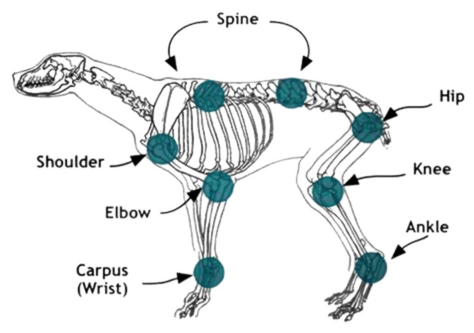
Joint Issues
Carrying excess weight stresses the skeletal system, particularly the joints. Over time, this can lead to degenerative diseases.
Extra weight can accelerate the wear and tear on the cushioning pads (cartilage) inside the joints, leading to painful conditions like osteoarthritis. This can significantly limit your dog’s mobility and overall zest for life.
Picture wearing a heavy backpack all day, every day. Eventually, your back and knees would start to hurt, making even basic tasks painful and exhausting. Similarly, a dog carrying extra weight experiences persistent strain on their joints.
Shortened Life Span
The combination of all these health risks leads to the most heartbreaking one: a reduced life expectancy.
Several studies have shown that obese dogs live, on average, nearly two years less than their lean counterparts. This is due to the cumulative effect of various obesity-related health issues.
Imagine a machine constantly running at its maximum capacity without any maintenance or downtime. Over time, the wear and tear will cause it to break down much faster than if it was running at optimal conditions.
Action List To Get You Started:
✅ Educate Yourself: Recognize the clear links between obesity and health issues in dogs. Understand that obesity isn’t just about looks, but it also directly impacts the overall health of your pet.
✅ Regular Vet Check-ups: Ensure that you’re scheduling regular visits to the vet to keep an eye on any developing health issues.
✅ Be Observant: Look out for signs of joint pain, fatigue, excessive thirst, or changes in appetite – these can all be indicators of the above health problems.
✅ Maintain a Healthy Weight: Use the assessment techniques from the next section to ensure your dog remains within a healthy weight range.
✅ Active Lifestyle: Promote a lifestyle that involves regular exercise and play to avoid weight-related health complications.
✅ Balanced Diet: Offer a balanced, portion-controlled diet. Avoid giving excessive treats or human food scraps.
Knowledge is the first step. By understanding the health risks associated with obesity, you’re better equipped to ensure your dog remains healthy, active, and by your side for many years to come.
Assessing Your Pet's Weight: How to Tell If Your Dog is Overweight
Understanding whether your dog is overweight is the foundational step in addressing the potential issue. It’s like identifying the root of the problem, so you can take proper action to resolve it. Let’s dive deep into how you can confidently and effectively assess your dog’s weight.
Physical Examination
Every dog is different, and what might be overweight for one breed might be completely normal for another. However, a hands-on approach can be a universal indicator.
Procedure: Gently run your hands along the sides of your dog, feeling for their ribcage. You should be able to distinctly feel each rib beneath a thin layer of fat. You shouldn’t have to press hard to feel these bones.
Example: Imagine reading a book through a thin bedsheet. The book represents the ribs, and the bedsheet symbolizes the fat layer. You should easily ‘read’ or ‘feel’ the book through the sheet without applying much pressure.
Overhead View
This is a simple visual assessment that can be done while your dog stands on a level surface.
Procedure: Stand directly over your dog and look down. You should notice a clear waistline behind the ribcage. If it appears straight or even bulging out, it may be a sign of excess weight.
Example: Think of an hourglass shape. The narrowed center of the hourglass is akin to a healthy dog’s waistline.
Side View
Another visual cue, the side view, can give you a sense of whether your dog is carrying extra belly weight.
Procedure: Observe your dog from the side. The abdomen should appear slightly tucked up behind the ribcage, not sagging down or appearing straight.
Example: Imagine a sleek sports car’s streamlined shape. From the side, the car’s bottom is higher at the rear than the front. Similarly, your dog’s belly should ascend from the chest to the hind legs, creating a sleek and healthy profile.
Action List: Get Started Right Now!
✅ Hands-on Check: Regularly perform a physical examination at home. Get into a routine of doing this regularly, so you’re familiar with your dog’s normal feel.
✅ Visual Inspections: Use the overhead and side view techniques at least once a week, especially if your dog is prone to weight fluctuations.
✅ Consult Your Vet: If in doubt, it’s always best to get a professional opinion. They can provide a more exact weight and guidance specific to your dog’s breed and age.
✅ Take Photos: Periodic photographs from multiple angles can help you visually track any changes over time. This can be especially useful for breeds with thicker coats, where visual assessments can be challenging.
✅ Keep a Weight Log: If you have access to a pet or veterinary scale, regular weigh-ins followed by logging the date and the weight, can provide a clear picture of your dog’s weight trend. Remember, sudden weight gain or loss can be a sign of underlying health issues.
By thoroughly understanding the signs and methods to assess if your dog is overweight, you’re taking a proactive step towards ensuring their long-term health and happiness. This knowledge is power, and in this case, the power to make informed decisions about your pet’s wellbeing.
Dog Obesity Prevention: Expert Approved Exercise Tips, Diet Adjustments, and More
While being aware of the risks associated with dog obesity is essential, the next logical step is prevention. Armed with expert-approved tips, you can ensure your dog maintains a healthy weight and enjoys all the zest that life has to offer. Here’s your comprehensive guide.
Exercise Regimen
Just like when we need to lose weight and healthier, 90% of the work comes from the kitchen. It’s mostly about what we eat. Eating less and focusing on more nutritious foods.
Your overweight pup is no different. Frequent and consistent exercise is important for dogs. Not only for weight loss, but also to help maintain movement and joint strength.
Frequency & Duration
Aim for daily walks. Depending on your dog’s size, age, and breed, this can range from 20 minutes to over an hour.
The key is consistency and adapting to your dog’s energy levels.
Types of Exercise
- Fetch Games: Engaging in fetch not only gives your dog cardiovascular exercise but also sharpens their focus and retrieval instincts.
- Agility Training: Setting up small obstacle courses can be both fun and mentally stimulating for your dog.
- Swimming: Especially great for dogs with joint issues as it provides low-impact, resistance-based exercise.
Dietary Adjustments
Quality Over Quantity: Choose high-quality dog foods. These are typically higher in protein, lower in fillers and artificial additives, and provide better overall nutrition.
Portion Control: Consult your veterinarian or the feeding guide on your dog’s food for portion recommendations. Measure out your dog’s food rather than estimating to avoid overfeeding.
Healthy Treats: Limit calorie-dense treats. Instead, offer veggies like carrot sticks, green beans, or broccoli. They’re low in calories and provide added nutrition.
Best Practices & Guidelines
- Consistency is Key: Establish a routine for feeding and exercising your dog. This not only helps in weight management but also provides a sense of security for your pet.
- Hydration: Ensure your dog has constant access to fresh water, especially after exercise.
- Monitor Weight: Regular weigh-ins, either at home or during vet visits, can help you track your dog’s weight and adjust as needed.
- Limit Human Food: Avoid giving your dog table scraps. They’re often calorie-dense, and some can even be toxic to dogs.
- Interactive Toys: Toys that stimulate your dog mentally can also have the added benefit of providing some level of physical activity, especially toys that release treats or kibble.
Your Action List:
✅ Structured Exercise: Establish a consistent exercise routine that includes walks, playtime, and other activities suitable for your dog’s breed and age.
✅ Nutrition First: Invest in high-quality dog food and monitor portions. Regularly consult with your vet about any dietary changes or supplements.
✅ Treats with Caution: Use treats as rewards, not as a regular part of the diet. When you do, opt for healthy, low-calorie options.
✅ Regular Check-ups: Schedule vet visits at least once a year to review your dog’s weight, diet, and overall health.
✅ Stay Educated: Continually educate yourself on dog nutrition and exercise needs. As new research emerges, there might be better ways to ensure your dog’s health.
Prevention, as they say, is better than cure. With these expert-approved tips and guidelines, you’re well on your way to providing your furry companion with a life that’s not just long, but also filled with vitality and joy.
The Thin Line Between Love and Overfeeding: Stop Letting Your Relationship with Food Impact Your Dog
Our relationship with our pets is often a reflection of our deepest emotions, and for many, food becomes an expression of love. However, when the boundaries blur, this love can inadvertently become harmful. This section unravels the emotional connection many of us have with feeding our pets and offers insights into healthier ways of expressing our love.
The Emotional Food Chain
For many, food is comfort. It’s a celebration, a reward, or a way to bond. But when we translate this emotional relationship with food onto our dogs, we’re imposing a human perspective onto an animal with different nutritional needs.
Consider the holidays. For us, feasting is both a tradition and a treat. But while you might indulge in that extra slice of pie and know you’ll hit the gym later, your dog doesn’t have that understanding. Every treat becomes an added caloric burden.
Misconceptions of Happiness
It’s a scene many can picture: The wagging tail, the eager eyes, the joyful gulp as your dog devours a treat. It’s hard to resist those pleading eyes, but every treat given outside mealtime can add up.
Redefining Love
True love for your pets is ensuring their long-term health and happiness. Here are some ways to express your affection without resorting to overfeeding:
- Quality Time: Spend more time playing, cuddling, or training your dog. These activities strengthen your bond without any health drawbacks.
- Invest in Experiences: Instead of treats, perhaps buy a new toy, or take your dog to a new park. New experiences can be thrilling for dogs and can deepen your bond.
- Education: The more you know about canine health, the better equipped you’ll be to make the best decisions for them. Knowledge can be a profound expression of love.
Picture two scenarios: In one, you give your child candy every time they ask. In the other, you spend time with them, playing games, reading, or teaching them something new. Which scenario is likely to be more beneficial in the long run?
Breaking The Cycle
If you find yourself habitually using food as an expression of love, here are some steps to break the cycle:
- Mindfulness: Recognize and acknowledge the emotional reasons behind your actions. Are you giving a treat because your dog needs it or because it makes you feel good?
- Seek Alternatives: Before reaching for a treat, consider other forms of rewards or bonding.
- Junk Food Swap: Just because you’re eating a bag of chips and your dog is staring at you with those sad eyes that are hard to say ‘no’ to, doesn’t mean you have to give him/her a snack that’s high in fat, salt, calories, etc. A minute of preparation is all it takes to reach into the small plastic bag that you keep with you as you’re snacking and hand the adorable pup a little carrot stick or chunk of celery instead.
- Consult Professionals: Speak to a vet or a pet nutritionist. Getting professional advice can offer clarity and motivation.
Action List For No Excuses:
✅ Reflect: Take a moment daily to assess your feeding habits. Are they coming from a place of emotion or genuine need?
✅ Alternative Rewards: Create a list of non-food rewards and keep it handy. It can be things like a short game, a new toy, or even just some cuddle time.
✅ Educate: Spend some time every month reading up on dog health, nutrition, and psychological needs.
✅ Talk About It: Share your journey with friends or family or join online pet communities. Peer support can be invaluable.
✅ Stay Disciplined: While occasional treats aren’t harmful, be conscious of their frequency and reasons. Remember, you’re doing this FOR your pup!
Your love for your pet is immeasurable, and every dog owner knows the joy of seeing their pet happy. But it’s vital to ensure that in our expressions of love, we’re not inadvertently causing harm. Remember, love is about what’s best for the loved one, even if it means redefining our own habits and beliefs.
Natural Remedies and Healthy Treat Recipes For Weight Loss: The Safe Route to Battling Pet Obesity
Natural remedies and homemade treats can be a wholesome way to manage and prevent obesity in dogs. They allow you to have more control over the ingredients and ensure that what your pet consumes is both nutritious and beneficial. Let’s explore some of these remedies and recipes to help your furry friend stay fit and healthy.
Natural Treats for Weight Management
- Green Beans: Low in calories and high in fiber, green beans can act as a filler in your dog’s diet. They can replace a portion of their regular food, making them feel full without the extra calories.
- Pumpkin: Rich in fiber and moisture, 100% puréed pumpkin (not pumpkin pie filling) can be a great addition to your dog’s meals. It helps with satiety and aids in digestion.
- Natural Herbs: Some herbs, like ginger and dandelion root, can boost metabolism and aid in digestion. Always consult your vet before introducing any new herb to your dog’s diet.
- Lean Cooked Meats: Meats like baked or boiled boneless/skinless chicken or turkey breasts, lean beef with all fat removed or baked salmon.
The Benefits of Homemade Treats
- Full Control: You know exactly what goes into the treat, ensuring no harmful additives or excessive calories.
- Cost-effective: Making treats at home can often be cheaper than store-bought versions, especially when made in bulk.
- Variety: You can rotate between different recipes, ensuring your dog doesn’t tire of the same flavor.
Healthy Treat Recipes

Carrot and Oats Dog Biscuits
Ingredients:
- 2 cups of oats
- 1 cup grated carrots
- 1 beaten egg
- Splash of water
Mix all ingredients to form a dough. Roll out, cut into desired shapes, and bake at 350°F for 25–30 minutes or until crispy.

Sweet Potato Chews
Ingredients:
- Thinly sliced sweet potato strips
Lay the strips on a baking sheet.
Bake at 225°F for 3–4 hours, turning them halfway, until they are dry and chewy.
Let them cool before serving.

Peanut Butter and Blueberry Frozen Treats
Ingredients:
- 2 cups blueberries
- 1 cup unsweetened Greek yogurt
- 1 tablespoon natural peanut butter
Blend all ingredients until smooth. Pour into ice cube trays or silicone molds and freeze.
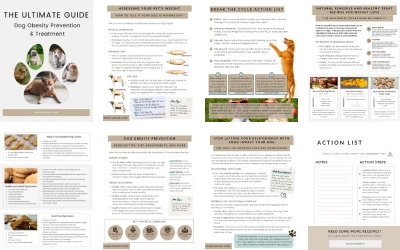
Get 3 Bonus Recipes & eBook!
Thanks! We're sending your ebook with bonus recipes to your email right now!
You can always unsubscribe!
Action List To Start Strong!





Natural remedies and homemade treats not only offer a healthier alternative to store-bought products but also give you an opportunity to bond with your pet through the process of making them.
Remember, it’s not just about cutting calories but ensuring what they eat is nutritious and beneficial. With these tips and recipes, you can help your dog tread the path of health with tasty, wholesome delights!
Wrap Up & Review
Congrats on making it to the end! You’re putting your dog’s health and longevity first, and that makes you the kind of pet owner we like here at Dakoa!
How about a quick review?
More To Discover
- Pioneering Anti-Aging Pill for Dogs Begins Trials, with 11-Year-Old Whippet Boo Leading the Pack
- South Korea’s Pivotal Move to Ban Eating Dogs: A Reflection of Changing Times and Attitudes
- 10 Common Mistakes People Make with Crate Training a Puppy
- Christmas Holiday Hazards for Pets and How to Protect Them
- Assessing Weight:
- Regular vet check-ups.
- Look for visible waist and rib feel.
- Use weight charts and body condition scores.
- Understanding Health Risks:
- Recognize complications like diabetes, joint issues, and respiratory problems.
- Early detection and intervention are crucial.
- Obesity Prevention:
- Establish a routine exercise schedule.
- Make dietary adjustments based on age, breed, and activity level.
- Engage in interactive play and challenges.
- Monitor portion sizes and calorie intake.
- Emotional Overfeeding:
- Distinguish between feeding out of love vs. habit.
- Replace food rewards with other bonding activities.
- Understand the emotional reasons behind overfeeding.
- Natural Remedies and Homemade Treats:
- Incorporate beneficial foods like green beans and pumpkin.
- Craft homemade treats like carrot-oat biscuits and sweet potato chews.
- Always ensure ingredients are safe for dogs.
Every wagging tail, every playful bark, and every snuggle on the couch is a testament to the deep bond we share with our canine companions. Their unconditional love and loyalty brighten our lives in countless ways. It’s now up to us to reciprocate that love by ensuring they lead long, healthy, and active lives.
The road to combating canine obesity is paved with knowledge, commitment, and a sprinkle of creativity.
With the tools and insights provided in this guide, you’re well-equipped to embark on this journey with your furry friend by your side. Remember, every step taken towards a healthier lifestyle is a step towards more joyful moments and memories with your beloved dog. Let’s make each moment count!








